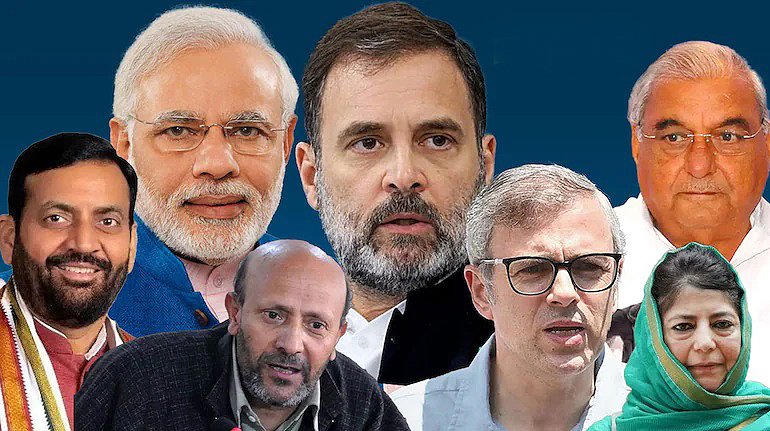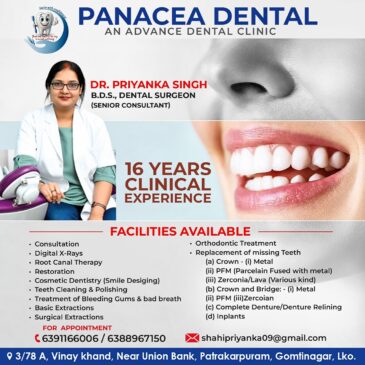Early Trends in Haryana, J & K give Congress edge

Srinagar/ Jind: As the vote count for the Assembly elections in Haryana and Jammu & Kashmir enters its early stages, the Congress is emerging as the frontrunner, surging ahead of the ruling BJP in both states. Early leads are indicating significant electoral shifts, especially in Haryana, where the Congress is nearing the halfway mark.
Haryana: Congress Surges Ahead
In Haryana, where 90 Assembly seats are being contested, a majority of 46 seats is required to form the government. As per the early trends:
- Congress is leading on 48 seats, showing a strong performance.
- The ruling BJP is ahead in just 15 seats, significantly trailing its rival.
- Om Prakash Chautala’s INLD is leading in 3 seats, maintaining a modest presence.
- The JJP, led by Dushyant Chautala, is only ahead in 1 seat, showing a sharp decline from its previous performance.
- Independents are leading in 4 seats, which could play a crucial role in a closely fought election.
Key battles in Haryana include constituencies such as:
- Julana, where wrestler and Congress candidate Vinesh Phogat is leading.
- Ladwa, where Chief Minister Nayab Singh Saini is ahead, defending his position.
- Uchana Kalan, where JJP chief Dushyant Chautala is trailing.
Savitri Jindal, India’s richest woman, is running as an independent and is leading in Hisar.
Jammu & Kashmir: Congress-National Conference Alliance Gains Edge
In Jammu & Kashmir, this election marks a historic moment as it is the first Assembly election in the region since the abrogation of Article 370 in 2019. Elections were held in three phases for the 90-member Assembly, and early trends show:
- The Congress-National Conference (NC) alliance leading with 33 seats.
- The BJP is trailing with leads in 16 seats.
- Mehbooba Mufti’s PDP is ahead in 3 seats.
The possibility of a hung assembly looms large, raising concerns among opposition parties that the Lieutenant Governor-nominated MLAs (five in total) could play a decisive role in forming the government.
Key Poll Issues
In Jammu & Kashmir, the central issues revolved around the restoration of Article 370, full statehood, unemployment, and terrorism in the Jammu region, which has seen a rise in militant attacks. Some of the key candidates include:

- Omar Abdullah (NC) from Ganderbal and Budgam.
- Iltija Mufti, daughter of PDP chief Mehbooba Mufti, from Bijbehara.
- Sajad Lone (People’s Conference) from Kupwara and Handwara.
- Ravinder Raina (BJP) from Nowshera.
Haryana: Key Constituencies and Anti-Incumbency Challenge
Polling in Haryana took place in a single phase on October 5, with a voter turnout of 67.9%. The BJP is battling strong anti-incumbency, having ruled the state since 2014. The party attempted a leadership change by replacing Manohar Lal Khattar with Nayab Singh Saini as the Chief Minister, but early trends suggest this move may not have yielded the desired results.
In contrast, the Congress appears energized, buoyed by its successful campaign in the state focusing on issues like:
- Farmers’ protest, which saw massive mobilization in Haryana.
- The wrestlers’ protest, which also played a key role.
- Rising unemployment and opposition to the Agniveer scheme.
Congress’s decision to field Olympian wrestler Vinesh Phogat from Julana proved to be a masterstroke, particularly in the Jat-dominated regions.
Battle to Watch
The early trends suggest a significant shift in the political landscape of both Haryana and Jammu & Kashmir. In Haryana, the Congress is within striking distance of a majority, while the BJP faces a potential defeat. In Jammu & Kashmir, the Congress-NC alliance is ahead, but the possibility of a hung assembly raises questions about the final outcome and the role of nominated MLAs.
As the vote count continues, these trends may solidify or change, but it is clear that both states are witnessing closely contested battles with wide-reaching political ramifications.










